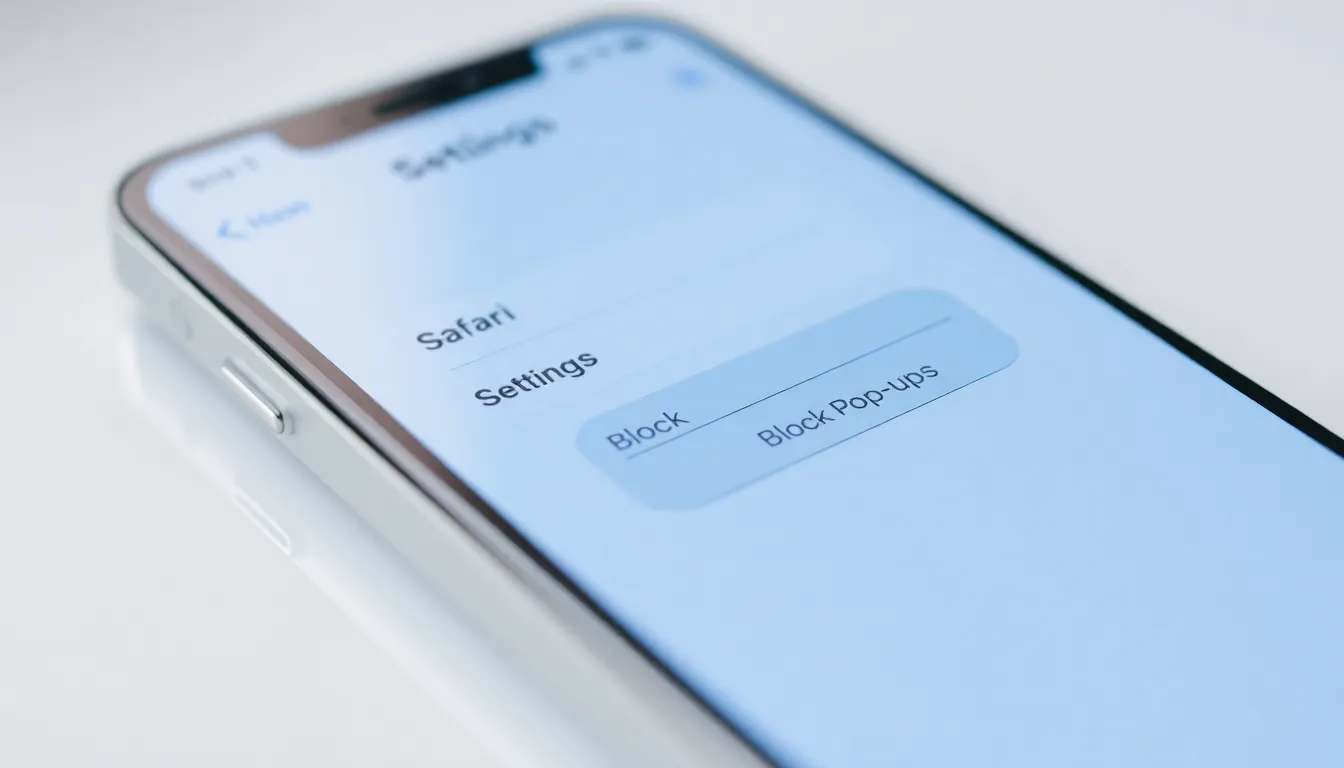Pop-up blockers on iPhones are like that overly cautious friend who insists on checking everything twice. While they mean well by keeping unwanted distractions at bay, sometimes they can be a bit too protective. If you’ve found yourself missing out on essential notifications or crucial website features, it might be time to let your iPhone breathe a little and disable that pesky pop-up blocker.
Table of Contents
ToggleUnderstanding Pop-Up Blockers on iPhone
Pop-up blockers on iPhones serve an essential function by limiting unwanted interruptions. These tools prevent ad pop-ups from appearing while browsing, ensuring a smoother navigation experience. Users often find their actions restricted by these blockers since they may also block necessary site features.
Occasionally, critical alerts or notifications require pop-ups for effective communication. Blocking these can lead to missing important information, like login prompts or special offers. However, many users may wish to support websites that rely on pop-ups for some interactions, especially e-commerce sites.
Disabling the pop-up blocker allows access to these elements, resulting in a more comprehensive browsing experience. Certain websites may ask for pop-ups if they provide essential content or services. Recognizing when to disable these settings is crucial for maximizing device functionality.
Safari, the default web browser on iPhones, includes built-in pop-up blocking to automatically enhance user focus. Users can toggle this feature through the settings menu, allowing for easy adjustments based on specific needs. Awareness of both the benefits and drawbacks of pop-up blockers empowers users to choose the best settings for their browsing habits.
Optimizing the balance between security and accessibility leads to a more effective use of the iPhone’s browser capabilities. Transparent communication with users about pop-ups can facilitate a clearer, more engaging online experience.
Steps to Disable Pop-Up Blocker

Disabling the pop-up blocker on an iPhone allows users to access important site features and notifications. Follow these steps to adjust the settings.
Accessing Settings
Open the Settings app on the iPhone. Find the settings menu by scrolling down. Users should look for Safari among the list of applications. Once located, tap on it to access Safari-specific settings.
Navigating to Safari Options
In the Safari settings, scroll to the General section. This section contains various options related to Safari. Locate the Block Pop-ups option within this segment. Users can now easily manage the pop-up blocker settings from this point.
Turning Off the Pop-Up Blocker
Tap the toggle next to Block Pop-ups to disable the feature. A change in color indicates that the blocker is off. After this adjustment, users can visit websites without pop-ups being blocked. Essential content, including alerts and notifications, becomes accessible again.
Tips for Optimal Browsing Experience
Enhancing the browsing experience on an iPhone involves adjusting settings beyond just disabling the pop-up blocker. Users can explore additional options for a smoother online journey.
Additional Safari Settings
Check out the settings in Safari for more features. Toggle on “Prevent Cross-Site Tracking” to boost privacy while browsing. Adjusting “Content Blockers” also helps remove unnecessary distractions. Users can customize their experience further by enabling “Fraudulent Website Warning,” keeping sessions safer. Exploring these options creates a tailored browsing environment, making online tasks more efficient and enjoyable.
Using Third-Party Browsers
Consider using third-party browsers for alternative functionalities. Browsers like Chrome and Firefox often provide unique features, including flexible pop-up management. Each offers different privacy settings to enhance user experience. Switching to these browsers may result in improved navigation and access to specific website features. Opting for third-party solutions allows individuals to find a browser that fits their needs best, focusing on convenience and usability.
Common Issues and Troubleshooting
Pop-up blockers on iPhones can create specific issues for users. Missing login prompts often frustrates individuals trying to access accounts. Users may also experience difficulties receiving important notifications when browsing.
Conflicting settings frequently cause unexpected behavior in Safari. Checking the “Block Pop-ups” option is essential, as toggling it off can solve many related problems. Another common issue involves third-party applications also implementing pop-up blocking, leading to restrictions on necessary alerts.
If pop-ups still appear, resetting Safari settings provides a potential fix. Users can navigate to Settings, select Safari, then scroll to “Clear History and Website Data,” which might resolve lingering issues.
Frequent crashes during website visits might signal problems with pop-up blocking. In these cases, uninstalling and reinstalling any third-party browsers may help restore functionality.
Monitoring Safari extensions is another critical step. Some extensions could inadvertently block pop-ups, particularly during online shopping or while accessing specific web pages. Disabling them temporarily allows users to identify whether extensions impact web browsing.
For persistent issues, updating the iOS may address underlying bugs. Users should regularly check for software updates under Settings, ensuring they access the latest features and fixes from Apple.
Testing other browsers can also shed light on compatibility problems. Switching to Chrome or Firefox may yield different browsing results if Safari’s settings seem inadequate after troubleshooting.
Disabling the pop-up blocker on an iPhone can significantly enhance the browsing experience. By allowing essential notifications and website features to come through users can ensure they don’t miss out on important information. It’s vital to strike a balance between security and accessibility while browsing.
Exploring Safari’s settings and considering third-party browsers can further optimize online interactions. Users should remain mindful of the potential drawbacks of pop-up blockers and adjust their settings accordingly. With the right adjustments users can enjoy a more seamless and engaging online experience.








